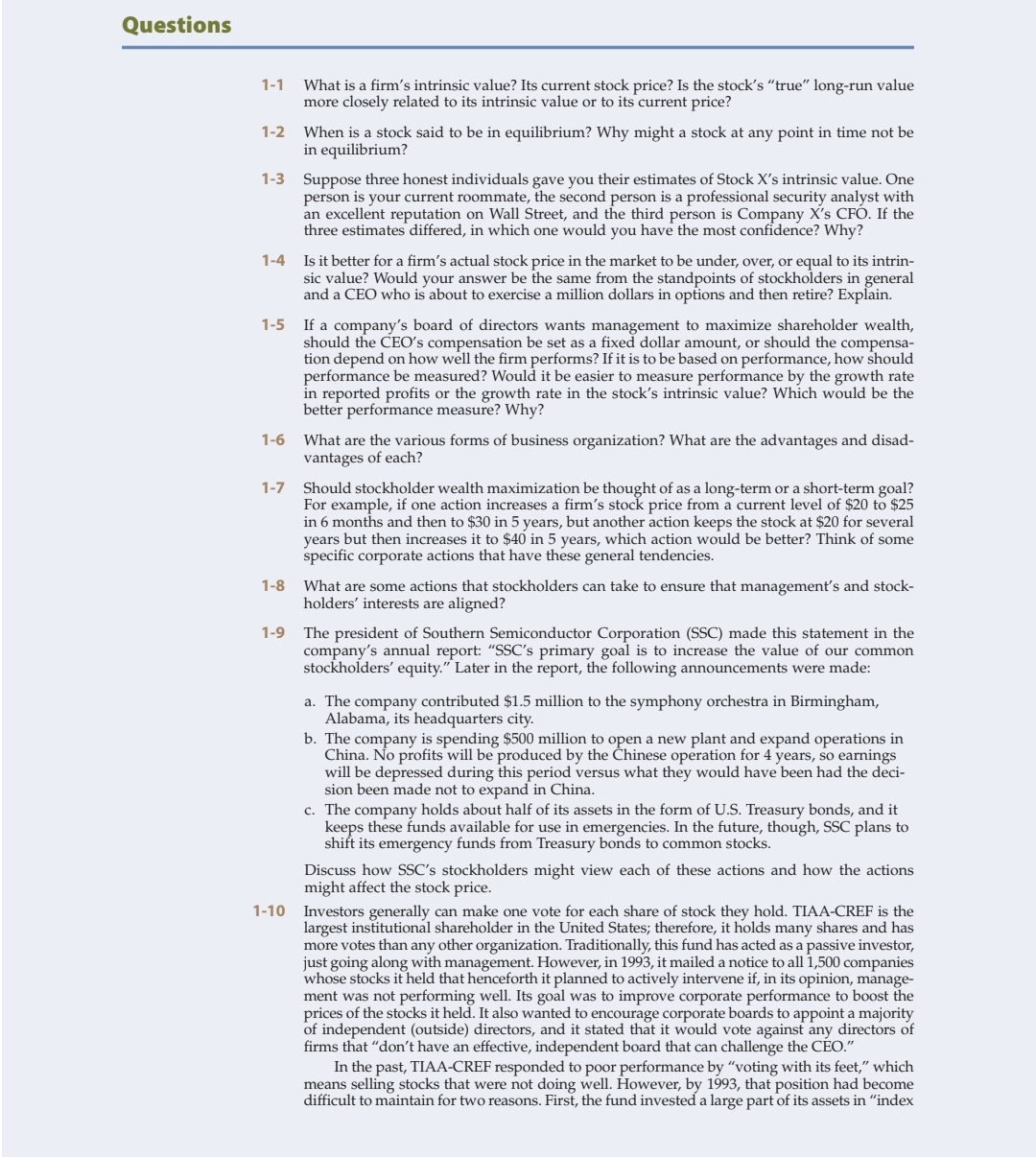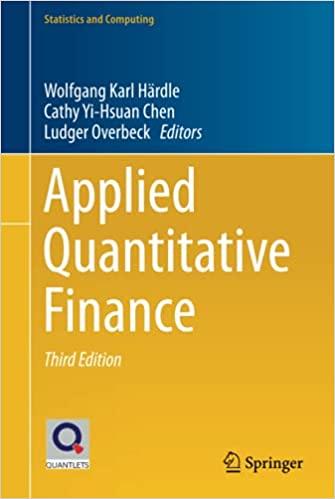Question
Questions 1-1 What is a firm's intrinsic value? Its current stock price? Is the stock's true long-run value more closely related to its intrinsic value
Questions\ 1-1 What is a firm's intrinsic value? Its current stock price? Is the stock's "true" long-run value more closely related to its intrinsic value or to its current price?\ 1-2 When is a stock said to be in equilibrium? Why might a stock at any point in time not be in equilibrium?\ 1-3 Suppose three honest individuals gave you their estimates of Stock X's intrinsic value. One person is your current roommate, the second person is a professional security analyst with an excellent reputation on Wall Street, and the third person is Company X's CFO. If the three estimates differed, in which one would you have the most confidence? Why?\ 1-4 Is it better for a firm's actual stock price in the market to be under, over, or equal to its intrinsic value? Would your answer be the same from the standpoints of stockholders in general and a CEO who is about to exercise a million dollars in options and then retire? Explain.\ 1-5 If a company's board of directors wants management to maximize shareholder wealth, should the CEO's compensation be set as a fixed dollar amount, or should the compensation depend on how well the firm performs? If it is to be based on performance, how should performance be measured? Would it be easier to measure performance by the growth rate in reported profits or the growth rate in the stock's intrinsic value? Which would be the better performance measure? Why?\ 1-6 What are the various forms of business organization? What are the advantages and disadvantages of each?\ 1-7 Should stockholder wealth maximization be thought of as a long-term or a short-term goal? For example, if one action increases a firm's stock price from a current level of $20 to $25 in 6 months and then to
$30in 5 years, but another action keeps the stock at
$20for several years but then increases it to
$40in 5 years, which action would be better? Think of some specific corporate actions that have these general tendencies.\ 1-8 What are some actions that stockholders can take to ensure that management's and stockholders' interests are aligned?\ 1-9 The president of Southern Semiconductor Corporation (SSC) made this statement in the company's annual report: "SSC's primary goal is to increase the value of our common stockholders' equity." Later in the report, the following announcements were made:\ a. The company contributed
$1.5million to the symphony orchestra in Birmingham, Alabama, its headquarters city.\ b. The company is spending
$500million to open a new plant and expand operations in China. No profits will be produced by the Chinese operation for 4 years, so earnings will be depressed during this period versus what they would have been had the decision been made not to expand in China.\ c. The company holds about half of its assets in the form of U.S. Treasury bonds, and it keeps these funds available for use in emergencies. In the future, though, SSC plans to shift its emergency funds from Treasury bonds to common stocks.\ Discuss how SSC's stockholders might view each of these actions and how the actions might affect the stock price.\ 1-10 Investors generally can make one vote for each share of stock they hold. TIAA-CREF is the largest institutional shareholder in the United States; therefore, it holds many shares and has more votes than any other organization. Traditionally, this fund has acted as a passive investor, just going along with management. However, in 1993, it mailed a notice to all 1,500 companies whose stocks it held that henceforth it planned to actively intervene if, in its opinion, management was not performing well. Its goal was to improve corporate performance to boost the prices of the stocks it held. It also wanted to encourage corporate boards to appoint a majority of independent (outside) directors, and it stated that it would vote against any directors of firms that "don't have an effective, independent board that can challenge the CEO."\ In the past, TIAA-CREF responded to poor performance by "voting with its feet," which means selling stocks that were not doing well. However, by 1993, that position had become difficult to maintain for two reasons. First, the fund invested a large part of its assets in "index

Step by Step Solution
There are 3 Steps involved in it
Step: 1

Get Instant Access to Expert-Tailored Solutions
See step-by-step solutions with expert insights and AI powered tools for academic success
Step: 2

Step: 3

Ace Your Homework with AI
Get the answers you need in no time with our AI-driven, step-by-step assistance
Get Started


